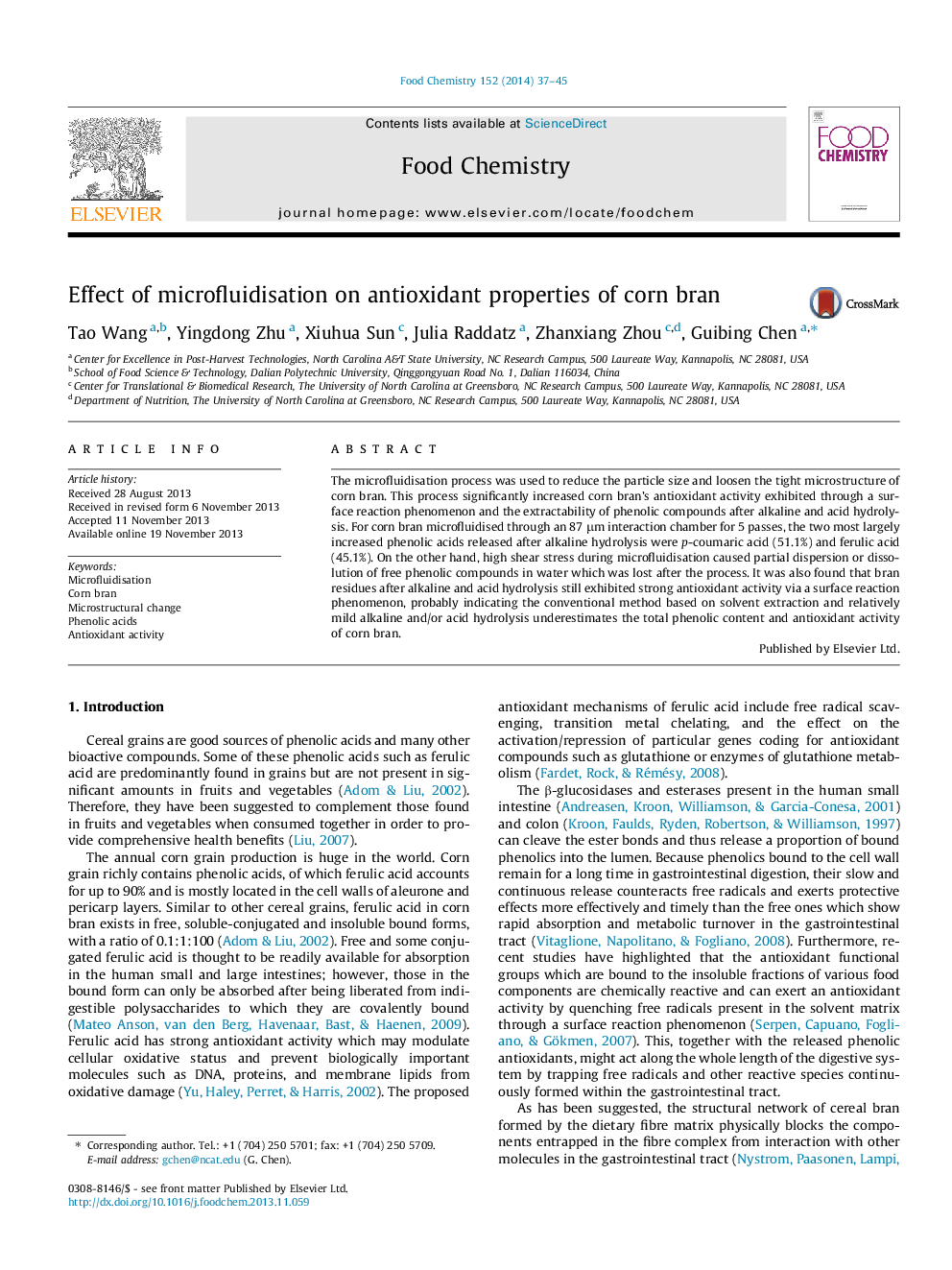| Article ID | Journal | Published Year | Pages | File Type |
|---|---|---|---|---|
| 7598517 | Food Chemistry | 2014 | 9 Pages |
Abstract
The microfluidisation process was used to reduce the particle size and loosen the tight microstructure of corn bran. This process significantly increased corn bran's antioxidant activity exhibited through a surface reaction phenomenon and the extractability of phenolic compounds after alkaline and acid hydrolysis. For corn bran microfluidised through an 87 μm interaction chamber for 5 passes, the two most largely increased phenolic acids released after alkaline hydrolysis were p-coumaric acid (51.1%) and ferulic acid (45.1%). On the other hand, high shear stress during microfluidisation caused partial dispersion or dissolution of free phenolic compounds in water which was lost after the process. It was also found that bran residues after alkaline and acid hydrolysis still exhibited strong antioxidant activity via a surface reaction phenomenon, probably indicating the conventional method based on solvent extraction and relatively mild alkaline and/or acid hydrolysis underestimates the total phenolic content and antioxidant activity of corn bran.
Related Topics
Physical Sciences and Engineering
Chemistry
Analytical Chemistry
Authors
Tao Wang, Yingdong Zhu, Xiuhua Sun, Julia Raddatz, Zhanxiang Zhou, Guibing Chen,
